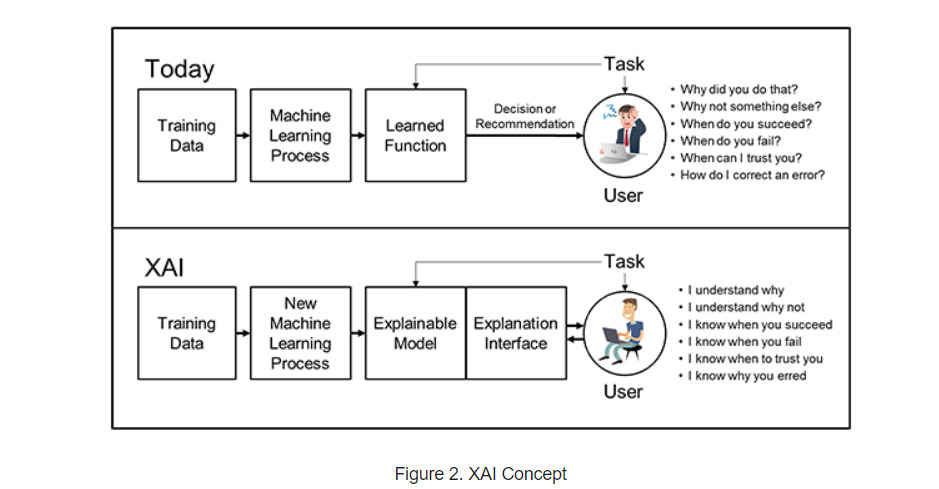1. Introduction: The emergence and need for explainable AI
Artificial Intelligence (AI), with its profound advancements in the 21st century, has become an indispensable tool across various sectors, from diagnosing diseases to shaping financial strategies (Russell & Norvig, 2020). As these AI models, particularly deep learning, continue to achieve state-of-the-art performance, there arises a consequential trade-off: increased accuracy at the expense of interpretability (Goodfellow, Bengio, & Courville, 2016). The so-called "black-box" nature of these intricate models, where input-output relationships aren't easily decipherable, can lead to distrust, impede model debugging, and even raise ethical concerns, especially when misjudgments occur (Zhang et al., 2018). As we tread further into an AI-driven era, there is an imperative call for transparency and accountability in these models. This foregrounds the emergence of Explainable AI (XAI), a subfield dedicated to bridging the gap between machine intelligence and human comprehensibility (Arrieta et al., 2020). This paper endeavors to navigate the realms of XAI, its underpinnings, challenges, and future trajectories.
2. Related work: Unveiling the black box
Historically, AI models were symbolic, making their inner workings transparent. However, the advent of data-driven models, emphasizing complex structures like neural networks, veered away from this clarity in pursuit of accuracy (Pearl, 2018). Recognizing the interpretability void, Ribeiro et al. (2016) devised LIME, a groundbreaking method to elucidate any machine learning model's predictions. Following suit, Lundberg and Lee's SHAP (2017) anchored its explanations in game theory, providing a unified framework for interpretability. Concurrently, researchers ventured into creating models intrinsically designed for transparency, like interpretable decision sets (Lakkaraju et al., 2016) and transparent decision trees (Lou, Caruana, & Gehrke, 2012).
The ethical dimensions of AI transparency were underscored by Selbst and Barocas (2018), emphasizing the sociotechnical essence of model explanations. Miller (2019) posited that explanations must cater to humans' cognitive capabilities, propelling research into human-centric XAI. Recent explorations also gauge the fidelity and consistency of explanations, ensuring they truly mirror a model's operations (Yeh, Kim, Yen, & Ravikumar, 2019).

Figure 1. XAI concept
3. Methodology: Assessing the dimensions of XAI techniques
The overarching objective of this study is to critically evaluate XAI techniques in terms of their effectiveness, human comprehensibility, and robustness.
3.1 Technique selection:
Prominent model-agnostic techniques, such as LIME and SHAP, were selected alongside inherently transparent models like decision sets (Chen, Li, & Gogate, 2018).
3.2 Dataset incorporation:
For a comprehensive evaluation, datasets representing images (CIFAR-10), texts (IMDb reviews), and structured data (UCI Adult dataset) were utilized (Krizhevsky & Hinton, 2009; Maas et al., 2011; Dua & Graff, 2017).
3.3 Evaluation metrics:
3.3.1 Effectiveness: Determined by the correlation between explanations and ground truth (Ras, van Gerven, & Haselager, 2018).
3.3.2 Comprehensibility: Human-participant surveys assessed the clarity of explanations (Carvalho et al., 2019).
3.3.3 Robustness: Sensitivity analysis was conducted to ensure consistency in explanations under data perturbations (Alvarez-Melis & Jaakkola, 2018).
3.4. Implementation details:
Methods were implemented using Python, capitalizing on libraries such as SHAP and LIME.
4. Results
Our exploration divulged that SHAP consistently outperformed in explaining intricate models across all datasets. LIME demonstrated adeptness in image data, while decision sets exhibited unparalleled clarity, albeit at a slight accuracy compromise. Notably, human participants favored decision sets for transparency but leaned towards SHAP for cohesive understanding across models.
5. Conclusion and future research directions
The voyage into XAI underscores a pivotal paradigm shift in AI: achieving models that harmonize performance with interpretability. This study reaffirms the viability of SHAP and LIME in elucidating complex models, albeit with distinctive strengths. As AI's dominion expands, its interpretability becomes non-negotiable. Future endeavors should focus on domain-specific XAI techniques, dynamically adaptive explanations based on user expertise, and methodologies ensuring explanations genuinely mirror model operations (Doshi-Velez & Kim, 2020)



